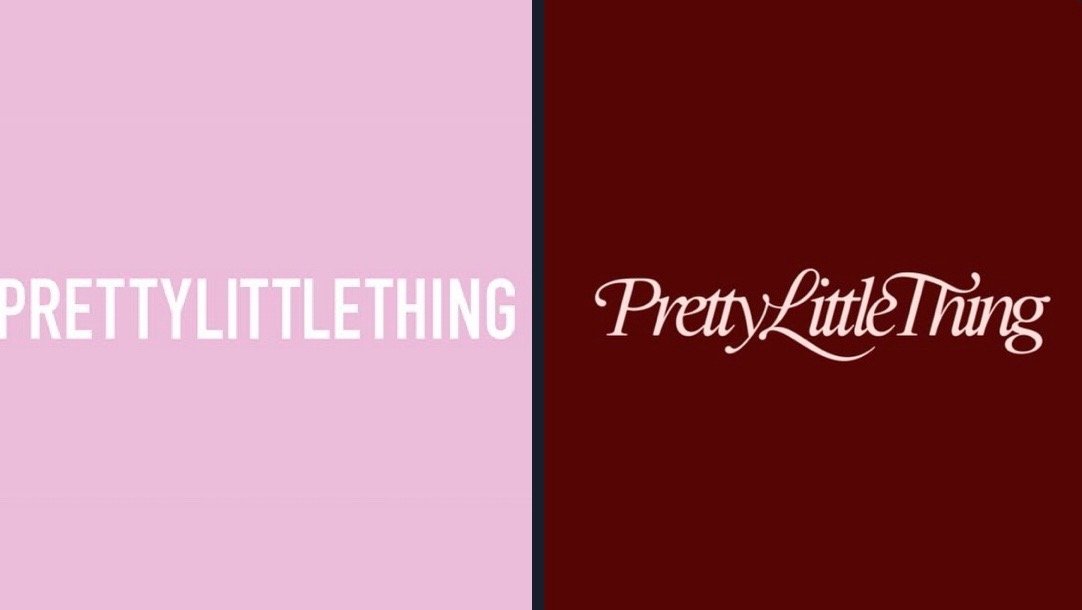PLT Rebrand: Unstable Economy?
Written by Chiedza
PrettyLittleThing (PLT) has undergone a noticeable transformation—leaving us wondering: where are we supposed to get our grey biker shorts and Tupac graphic tee combo from now? This aggressive identity change has shifted Pretty Little Thing from ‘BBL fashion’ to a vague attempt at quiet luxury. Moving its colourful and loud designs to the back (or the archives) and replacing them with structured silhouettes, long flowy skirts and neutral colour palettes. However, this rebrand speaks to a larger issue and is reflecting a global financial crisis that our millennials and older gen Z’s are struggling to navigate.
One social media user referred to the PLT rebrand as ‘‘clean girl corporate’ which is fitting given the sudden increase of tailored items on the PLT homepage. However, If one may choose to be a little dramatic - which one always must - the new ‘‘clean girl corporate’ aesthetic, feels like an attempt at beautifying and concealing an all consuming work culture that is the current reality of many. Due to the economic instability that we have been facing it has become harder and harder to sustain a comfortable lifestyle on one stream of income. That often means that individuals are taking extra shifts, working multiple jobs or creating side hustles in order to build multiple streams of income. As a result brands are pivoting in order to create clothes and collections that cater to and reflect where we spend the majority of our time, Work. Thus creating a catalyst for the new corporate aesthetic of PLT. A mere extension of the ‘office siren’, corpcore trends we have seen over the last few years.
A theory which appears relevant here is George Taylors ‘ Hemline Index, which gained traction in the 1920’s. Taylor's theory suggests that hemlines are prone to fluctuate to mirror the financial position. In times of economic prosperity hemlines get shorter and during economic hardship hemlines tend to lower. For example the iconic, and shorter, flapper dresses of the 1920’s, during a time of economic prosperity. In today’s setting we see this with the PLT rebrand, their hemlines have gotten noticeably longer during these current financially uncertain times. Whilst addressing the hemline index Dr Dawnn Karen, fashion psychologist spoke to InStyle magazine and took the direction that hemlines are not directly influenced by the status of the economy but rather our personal reactions and feelings to what is going on around us. As we live through more financially insecure times we focus on more practical, and sensible factors. In terms of fashion we are less likely to take the ‘skirt should be the size of a belt’ approach and purchase a piece of clothing that we are only going to wear a handful of times. Instead we buy items of clothing that we can get the most wear out of. Historically we saw this with Chanel, and their signature ‘little black dress’ during the Great depression. Part of why this dress was so successful was because of its ability to be repurposed, re-styled and re-worn countless times whilst maintaining that elegance at a time where women didn't have the disposable income to be repeatedly buying a new dress for different functions.
“They were micro-trend central. Post-rebrand, it's clear to see that they're going for a more long-term vibe, hence their new tagline - ‘legacy in progress”
To sink our teeth a little deeper into this subject I reached out to Ayra Siddiqi, fashion psychologist, to get her expertise on the topic. Arya explained the emotional and psychological effect an uncertain economic climate can have on dressing. Naturally economic hardships cause stress, anxiety and fear, and as a result Ayra Siddiqi explains how this forces “people to turn away from loud, ostentatious styles to more lowkey, minimalistic look”’. Therefore when we look at the PLT home page we can see a noticeable difference from their colour scheme to now, with more muted tones. So farewell to the PLT swirly whirly ‘abstract’ dress and subconsciously your choices become light beige, neutral beige, dark beige or if you are in those final five days before payday it is looking like grey is the way to go.
Another aspect that Ayra Siddiqi highlighted, was data from the Australian Bureau of Statistics stating that ‘consumer spending decreased by 2.5% in April 2024 compared to the previous year’. This data suggests a growing global awareness within consumers of the dangers of the fast fashion industry. With increased attention on second hand, charity shopping and ‘thriting' in recent years consumers are becoming more careful about the social and climate impact of the clothes they buy. “Previously, PLT was everything fast fashion with its cheap clothing and even cheaper materials. They were micro trend central. Post-rebrand, it's clear to see that they're going for a more long-term vibe, hence their new tagline - ‘legacy in progress”.
So yes, when I look at the PLT brand, I see not just a change of aesthetic but a reflection of a declining economic state. A brand which is pivoted in order to mirror the social, economic and political climate that consumers are facing. But if you look closely you may just see fossils of the old PLT that remain such as a glimpse of a typical London taxi shrink wrapped in the familiar pink and white unicorn.


